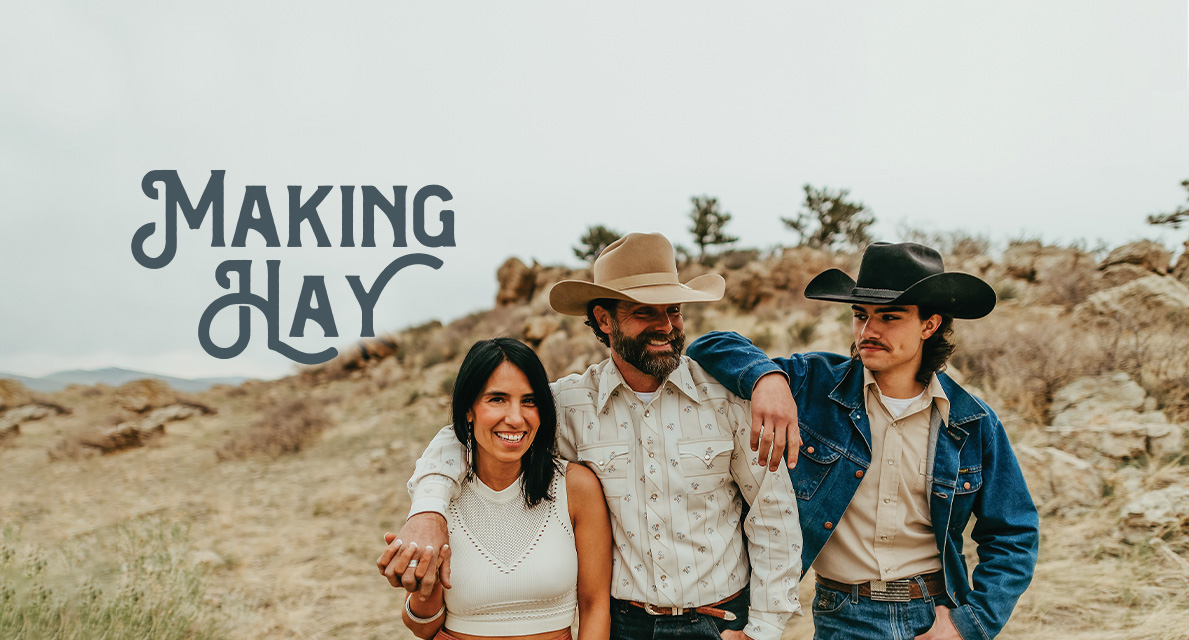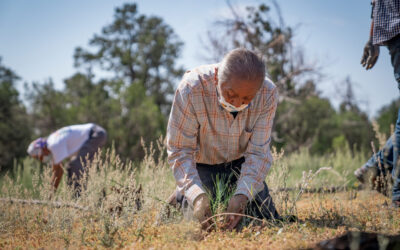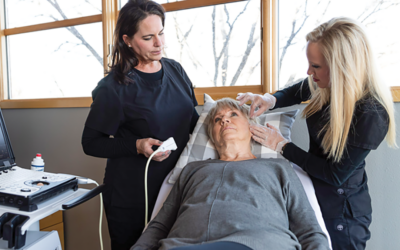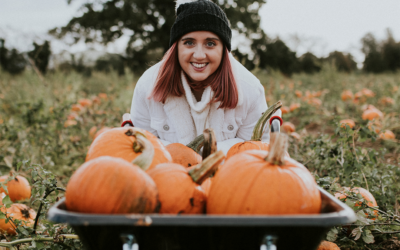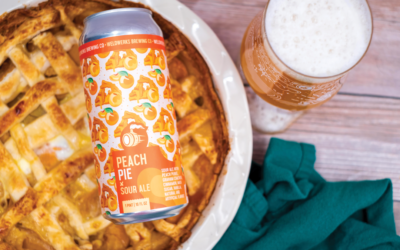Seven years ago, Josh and Erica Ciardullo were raising their son, Henry, in the suburbs outside of Boulder when a simpler life called out to them.
City life had begun to feel crowded for the firefighter and schoolteacher, and they wanted more room to breathe. In 2014, they sold their house and bought a 33-acre property in Wellington. On his days off from the fire department, Josh helped their new neighbor tend to his cattle, which is when he started reading about ranching and realized how beneficial owning livestock would be for their land. They hadn’t seriously considered cattle until the move, but they started with a few chickens, and when the opportunity presented itself, Josh went to purchase a cow. He came home with three.
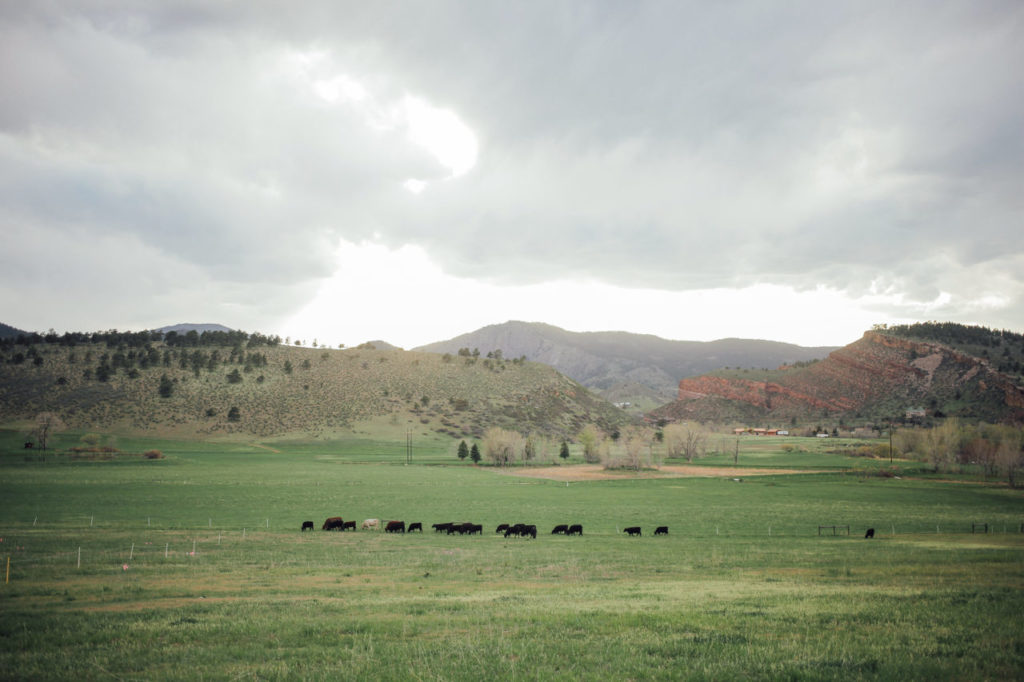
The Big Valley at Sylvan Dale Guest Ranch, where Ciardullo leases property to graze his cattle. Photo by Ryan Muglia.
“When Josh brought the cattle home, we knew we wanted to honor the land by raising grass-fed beef,” Erica says. “We’re environmentalists at heart: we love our land, we love animals and we’re all about eating healthy, organic food, so we were excited to get more involved in that process.”
Josh and Henry immediately got to work pounding in fence posts and preparing the property for rotational grazing, an eco-friendly method where parts of the pasture are sectioned off to rest and regrow while the cattle graze on the remaining area. They spent the next few years refining their process and sharing the fruits of their labor with friends and family. When Josh had to retire early as a paramedic because of an injury, he found himself spending even more time doing what had become his therapy. Not wanting to overwork the land, Josh searched for additional space so he could expand the business and purchase more cattle.

Josh Ciardullo – Photo by Elise Taylor
He stumbled upon the famous Sylvan Dale Guest Ranch, a 3,200-acre property in west Loveland with plenty of land to lease. Josh got grants from the Natural Resources Conservation to improve a 500-acre stretch of the valley by installing pumps and putting in a rotational grazing system. Now the Ciardullos lease more than 2,000 acres of Sylvan Dale property, where they have between 30 and 40 head of cattle, depending on the season.
“We take a very hands-off approach, allowing the cattle to roam freely and breed naturally on the land,” says Josh. “They get to live their most beautiful, natural life out there, and then we honor them with a quick death at home. We tear up every time, but we pray over them and process the meat locally, using every bit of the animal we can.”
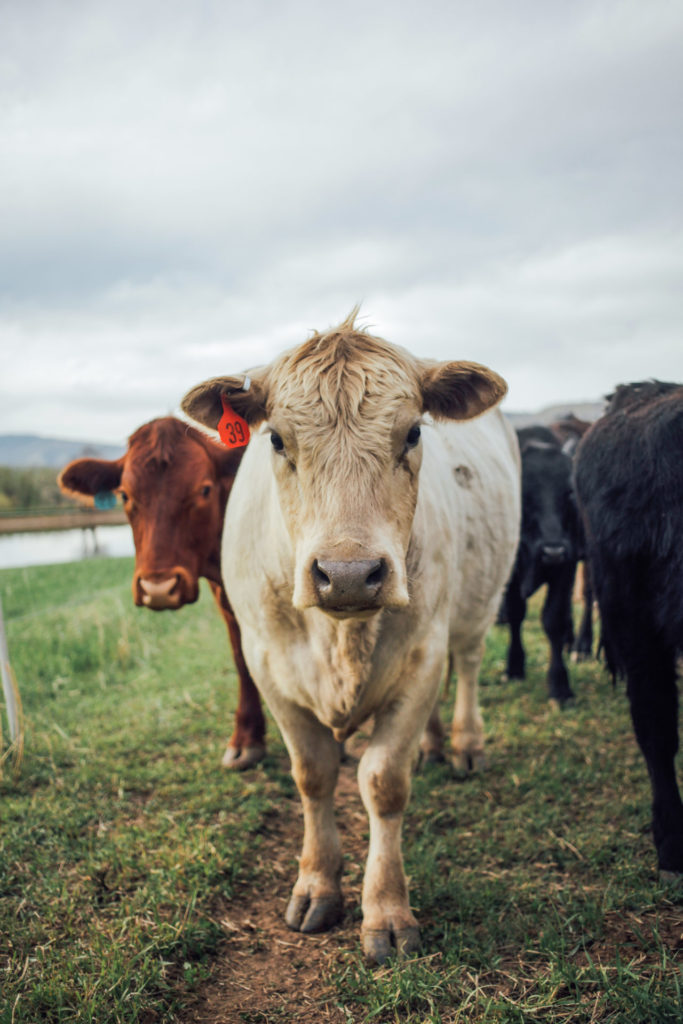
Photo by Ryan Muglia.
Once the meat is processed, they sell directly to the consumer in quarter-beef, half-beef and whole beef quantities with prices based on hanging weight and optional delivery. The Ciardullos welcome anyone to come “meet their meat,” so they can see how and where the animals are raised. The quality of their product hasn’t gone unnoticed: One of NOCO’s favorite local restaurants, The Still Whiskey Steaks (voted #1 for Best Steakhouse in 2021’s Best of NOCO), incorporated it into their menu.
Though they are known for their grass-fed beef, the Ciardullos started raising grass-fed lamb (sold whole) and bees, which benefit the alfalfa, clover and other flora on the land. The hives on both properties are managed by local beekeeper Son Rise Honey Co., whose raw, unfiltered honey is sold through the Ciardullo Ranch website.
Josh and Erica also work with other local artisans who create high-quality, sustainable and handmade products. One of those businesses is Humble Hive Co., a local skincare company that makes whipped tallow, balms and salves using the Ciardullos’ cow fat. Other businesses they collaborate with include local knife maker Dagr & Nott, leatherworker Jimmy C’s Custom Leather and belt buckle maker Western Heritage Company.
Josh is on the board for Revital Colorado, a local nonprofit that provides outdoor activities such as fly fishing to help look after first responders’ mental health. As a former first responder, he is passionate about mental health and regularly hosts horseback rides on the ranch.
“So many of our first responders have some level of PTSD,” says Erica. “Working with the animals and being out on the land has been incredibly healing for Josh, and it allows him to share that with others, especially young veterans.”
The couple also donates a whole cow every year to other organizations that serve people in need. Their next donation will be made to Heroes and Horses, a nonprofit in Montana that helps veterans by connecting them with nature, teaching them survival skills and helping them learn how to ranch.
For the Ciardullos, ranching has grown from a hobby to a lifestyle that reaps great rewards. They nearly sell out of beef every year, but rather than buying more cattle and scaling up their operation, Josh says they’re content where they are: “We’ve maxed out how much we can do while still being good stewards of this land. Our next goal is to get Erica out here so we can both work on the ranch full-time and find new ways to give back in our abundance.”
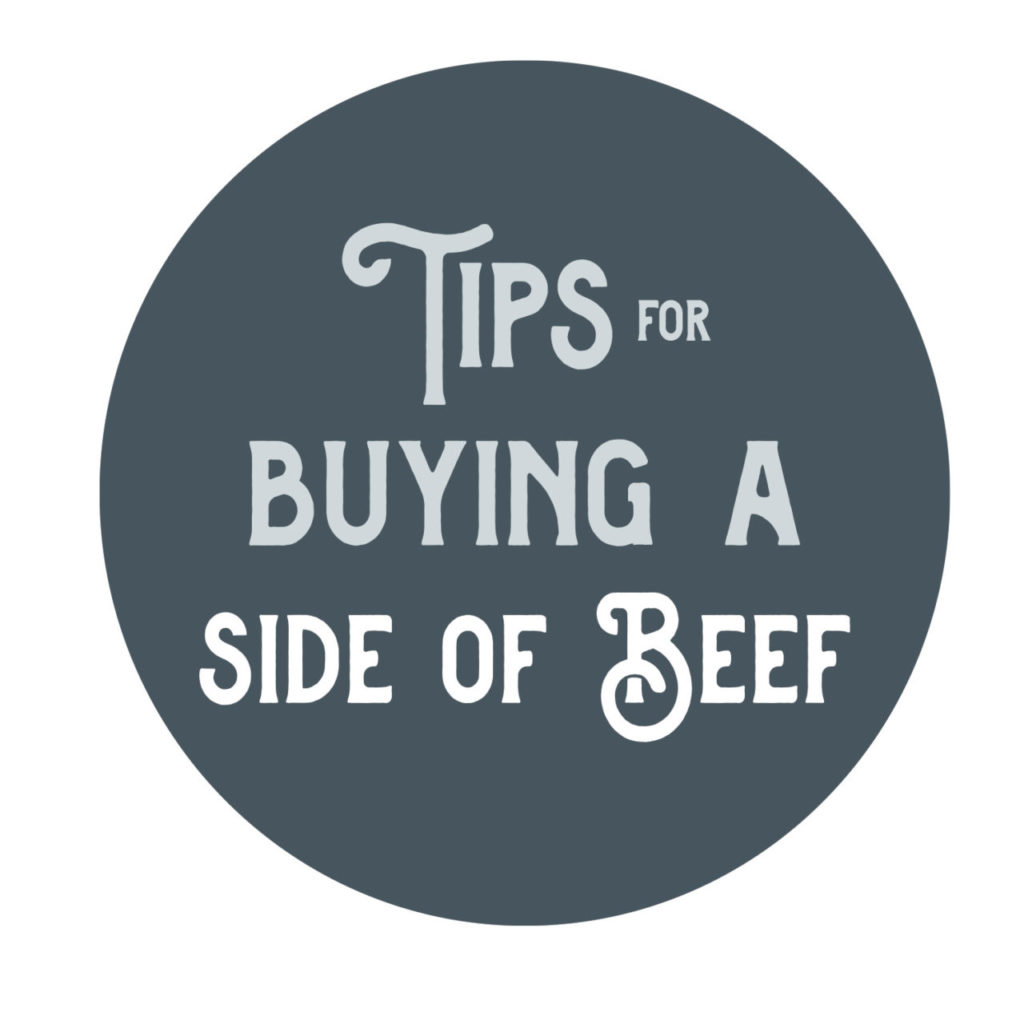
KNOW WHAT YOU’RE GETTING – A typical side of beef contains all the different cuts of an animal, including roasts, steaks, tenderloins, ribs and burger meat—not all steaks. Of those cuts, Josh says about half of the packaged product will be burger meat and the rest will be split into steaks and roasts, totaling around 260 pounds of take-home meat for a side and 130 pounds for a quarter.
START A COW POOL – If a side of beef (or even a quarter) seems like too much, Josh suggests going in on the purchase with friends and family. However, he says the average American eats 75 pounds of red meat per year, so a quarter of beef really only lasts two people for one year. Cattle also don’t birth year-round, so the goal of buying a quarter or side of beef is to make it last until the next sale.
PREP YOUR FREEZER –The amount of beef you buy will determine how much freezer space you need. Josh says a standard chest freezer can easily fit a quarter of beef, and maybe even a full side. If you’re splitting the order and end up with an eighth or less, that will usually fit in your standard fridge-freezer combo, though you still might need to move things around to fit it all in.
____________________________________________________
Laurel Thompson is a Fort Collins native and CSU alum. When she isn’t writing for local lifestyle publications, you’ll find her soaking up the sun, cooking something delicious, or reading a good book while sipping an iced coffee.


